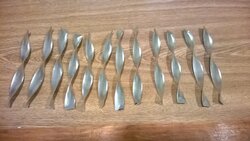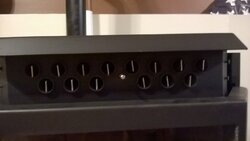skibumm100
Feeling the Heat
Nope. It's done with a contact K thermocouple right on the exhaust exit housing from the blower. This is AFTER I made the mods to my stove. If you're measuring 380 degrees, I would guess your heat exchanger isn't 'exchanging' due to build up of ash or your exhaust blower is running too high and not giving your exhaust enough time to exchange heat.
Realize that the temps I took were to measure relative exhaust temps before and after my mods to prove that I was extracting more heat with the mods. We aren't measuring the exact same thing BUT I seriously doubt that there would be a 200 degree delta T between the gases and the steel.
Now you've got me hooked. Sorry...a little OT. Do you have a description of your mods? My OAK temp is 110-125 deg F so it' unlikely I will see exhaust temps around 160 deg F. What were you exhaust temps pre-mod vs. post-mod? My insert room outlet temps are high 200's so I think I'm doing OK with HX.


 I was just trying to state two facts to think about. The gases from wood burning do form creosote below 250. And it is playing with fire. I mean literally. Aren't we all? It was just a play on words that apparently did not come out right.
I was just trying to state two facts to think about. The gases from wood burning do form creosote below 250. And it is playing with fire. I mean literally. Aren't we all? It was just a play on words that apparently did not come out right. If I could, I'd program in a higher setting on the blower or a lower time on the auger cycle. A one hour burn on high clears things up.
If I could, I'd program in a higher setting on the blower or a lower time on the auger cycle. A one hour burn on high clears things up.


